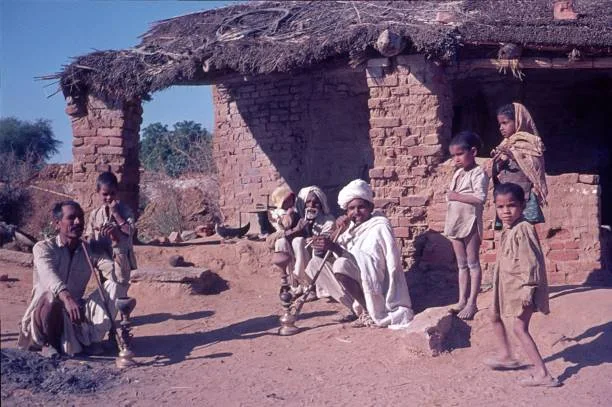The Evolution and Impact of the Caste System in India: A Historical Analysis
The origins of the caste system in India trace back to ancient scriptures, societal structures, and historical developments that have shaped the country's social fabric over millennia. While its exact emergence remains debated, the caste system's evolution reflects complex interplays of religion, politics, and cultural dynamics.
In ancient India, the Rigveda, one of the oldest scriptures, mentioned the varna system, categorizing society into four main groups: Brahmins (priests and scholars), Kshatriyas (warriors and rulers), Vaishyas (merchants and farmers), and Shudras (laborers and service providers). This stratification likely reflected occupational divisions rather than rigid social hierarchies.
Over time, these varnas became associated with hereditary traits, with birth determining an individual's caste. The Manusmriti, a Hindu legal text dating to around 200 BCE to 200 CE, codified these ideas, prescribing social norms and duties based on caste. It also introduced the concept of Dalits or "untouchables," outside the caste system, performing menial tasks considered impure.
The spread of Buddhism and Jainism challenged Brahmanical hegemony, advocating spiritual equality and rejecting caste distinctions. However, despite their influence, the caste system persisted and even absorbed some Buddhist and Jain principles.
The Gupta period (4th to 6th centuries CE) saw further consolidation of caste-based society, with the state endorsing Brahmanical values and reinforcing social hierarchy. Land grants and patronage were often tied to caste, entrenching the system economically and politically.
Medieval India witnessed the emergence of jatis, sub-castes or occupational groups within varnas, further stratifying society. Jatis regulated marriage, occupation, and social interactions, cementing caste-based identities.
Islamic invasions and the establishment of Muslim rule from the 12th century onwards introduced new dynamics. While Islamic societies did not have a caste system, interactions with Indian society influenced social structures, leading to the formation of caste-like groups among converts and interactions between Hindu and Muslim castes.
The Mughal period (16th to 19th centuries) saw a continuation of caste distinctions, with the administration often relying on caste-based intermediaries for governance. However, Mughal policies were relatively inclusive, providing opportunities for mobility and integration, albeit within existing caste frameworks.
British colonialism significantly impacted the caste system. Early British administrators relied on caste for governance, codifying caste identities in census operations and legal systems. However, British policies also inadvertently challenged the caste system through modern education, legal reforms, and the promotion of Western ideas of equality.
The 19th-century social reform movements, led by figures like Raja Ram Mohan Roy and Jyotirao Phule, critiqued caste-based discrimination and advocated for social justice and equality. These movements laid the groundwork for caste-based reservations and affirmative action in independent India.
Post-independence, the Indian Constitution abolished untouchability and provided for affirmative action through reservations in education, employment, and politics for Scheduled Castes (formerly untouchables), Scheduled Tribes, and Other Backward Classes (OBCs). While intended to address historical injustices, these policies have also sparked debates over meritocracy and social cohesion.
Contemporary India continues to grapple with the legacy of the caste system. While legal reforms and affirmative action have improved the socio-economic status of marginalized castes, caste-based discrimination and violence persist, challenging the nation's ideals of equality and social justice. Efforts to dismantle the caste system require not only legal and policy interventions but also deep-rooted societal transformations and cultural shifts towards inclusivity and empathy.













0 Comments